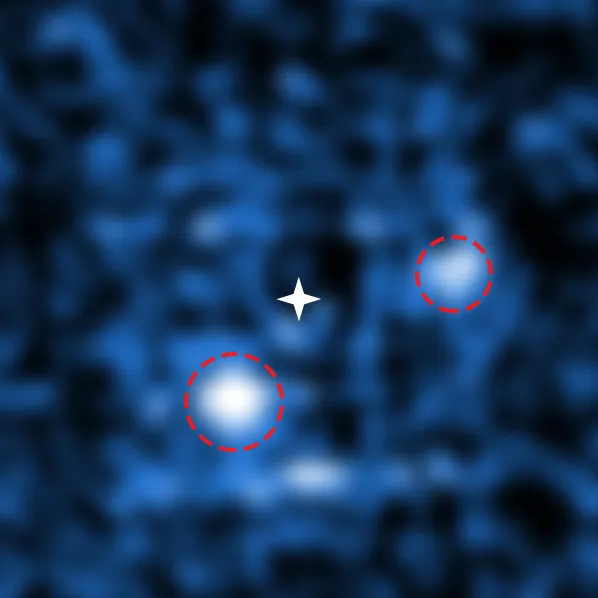Astronomers Snap a Rare Picture of Two Baby Planets
The Very Large Telescope imaged Planets PDS 70b and PDS 70c about 370 light years away creating a gap in the gas and dust disk around their star
/https://tf-cmsv2-smithsonianmag-media.s3.amazonaws.com/filer/e6/cc/e6cc0a4b-0455-478d-a8f9-9b14f6e48a65/illo.png)
Scientists have never actually seen the vast majority of the 4,000 exoplanets, or planets orbiting stars other than our own, discovered in the last three decades. Instead, the existence of the planets is calculated from indirect observations, such as measuring changes in host stars’ brightness or tracking little wobbles caused by the gravitational tug of the bodies orbiting them. But in a few rare cases, researchers have succeeded in capturing an image of an exoplanet.
The latest capture detailed in the journal Nature Astronomy is particularly unique, showing two newborn planets swirling around a young star called PDS 70, which is located about 370 light years from Earth.
According to Mike Wall at Space.com, this is just the second time that researchers have imaged a multiplanet system. PDS 70 is a little less massive than our sun and much younger, just 6 million years old. Because of its young age, it’s still surrounded by a halo of gas and dust. Billions of years ago, our own solar system was also surrounded by a similar disk of gas and dust that was eventually swept up by young planets as they formed.
Around PDS 70, that process is still happening—and that’s the image the 3D MUSE spectrograph instrument on the European Southern Observatory’s Very Large Telescope helped capture. Two planets, PDS 70b and PDS 70c, are orbiting the star, sucking up material and creating a gap in the accretion disk between 1.9 and 3.8 billion miles wide. PDS 70b was discovered in 2018 orbiting the inner rim of the gap, about 2 billion miles from its host star, or the distance from Uranus to the sun. It’s estimated to be 4 to 17 times the size of Jupiter. PDS 70c was discovered more recently orbiting at about 3.3 billion miles from PDS 70, or roughly the orbit of Neptune. It’s believed to be about 10 times the size of Jupiter.

“This is the first unambiguous detection of a two-planet system carving a disk gap,” co-author Julien Girard of the Space Telescope Science Institute in Baltimore, Maryland, says in a press release.
The technique that discovered the wee baby worlds wasn’t designed to seek out planets. Instead, the observation mode was calibrated to find hydrogen gas. To do so, the Very Large Telescope searched out the light emitted by hydrogen, which is a sign of debris disks and gas clouds.
“This new observing mode was developed to study galaxies and star clusters at higher spatial resolution. But this new mode also makes it suitable for exoplanet imaging,” lead author Sebastiaan Haffert of Leiden Observatory says in the release.
Girard says that the finding could change how astronomers interpret what they see. Other telescopes could also find these types of gaps in accretion disks regularly without seeing planets within them. “The open question has been, are there planets there? In this case, the answer is yes,” Girard says.
But determining whether all those gaps around other stars are formed by planets will take many more observations. Luckily, science is on the cusp of having the tools to do just that.
When the James Webb Space Telescope—scheduled for launch in early 2021 after many delays—begins peering into the sky, it should be able to directly image exoplanets using an instrument called a coronagraph. Other next-generation telescopes either proposed or under construction, including the Giant Magellan Telescope, the Thirty Meter Telescope and the European Extremely Large Telescope will also allow us to see the thousands of exoplanets in our galaxy just little bit more clearly in the near future.